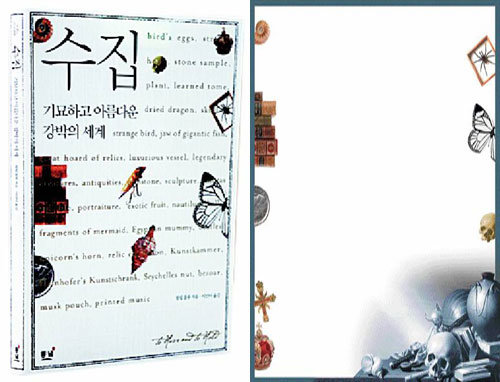Material World

On October 29, 1969, Christies auction house in New York auctioned what was politely referred to as a mummified muscular item from a collection featuring the bones and body parts of Napoleon Bonaparte.
The item was put up for auction with a staring price of $10 and sold for $14,000 to Brian Gimelson from Pennsylvania. The reason he bought Napoleons member was that his wifes name was Josephine.
Bone and body part collecting reached its peak in Medieval times. What were advertised as the nails that pinned Jesus to the cross and even the dried flesh of Jesus became popular collectibles. Fake flesh, in particular, gained popularity, as well as questions regarding its authenticity.
To Have and to Hold, published in 2002, is a book that guides readers through the beautiful, peculiar world of bone collecting. It runs the gamut of the genres history from the Middle Ages to today, and introduces notable items, their secret stories, and the trends and ideologies of the times.
It can be said that this book covers micro-history and macro-history at the same time.
Historically, people do not collect only materials. Valerio Camillo, who designed the Theater of Memory (Teatro de la Memoria), hoped to embrace all the knowledge in the world; Casanova, who collected the affections of numerous women; and Claudio Villa, who sponsored opera singers worldwide and cried, This is my opera! were all collectors, too.
The author perceives human psychology behind the act of collection and says the collection instinct is a matter of human existence.
The collecting instinct means fighting death, disappearance and dread. Thus, the collectors passion is akin to memorys chaos.
Collections, once a privilege of the wealthy in the Roman Empire, grew in popularity during the Renaissance. Society gradually turned worldly, and the beauty of decadence that emphasized the here and now became mainstream. A troubadour once said, Gather ye rosebuds while ye may, Old time is still a-flying: And this same flower that smiles today, tomorrow will be dying (Robert Herrick).
When withering roses no longer mean entering an eternal world, but stand for irreversible loss, people often turn to the material world when death seems bigger and closer. The collection craze is a signal of this phenomenon.
Why on earth are people squandering money on matchboxes, used stamps, and empty bottles that have not contained a drop of wine for so many years?
To a collectors eyes, there is a reason. According to the book, as the Sons bones bridge heaven and immortality, the collector sees in his or her collection a transcendental object, a certain world far more crucial than the existence in this earthly life.
Therefore, to catch those coveted things, he or she will stop at nothing. He would steal anything and engage in any conspiracy. He would travel all around the world. He would even willingly marry someone. If history is any guide, greed for items has even precipitated murder.
Thus, the art of collection is a never-ending work. The most important thing in collecting is gathering the next item. While contemplating where to put the item in possession, ones hungry eyes are already looking far ahead.
Collectors never doubt the items they pursue will fill their void, but upon touching them, the satisfaction disappears.
It is said that collectors come under one of Medusas curses. All beings turn to stone the moment they see Medusa. Cast in the world of death and silence, she craves a fulfillment that never comes. Those who pursue transcendence in a material world will not avoid Medusas curse.
Gi-U Lee keywoo@donga.com






![넘치는 전재수 과거 사진들…유죄의 증거일까, 무죄의 증거일까[청계천 옆 사진관]](https://dimg.donga.com/c/138/175/90/1/wps/NEWS/IMAGE/2025/12/20/132997378.1.jpg)
